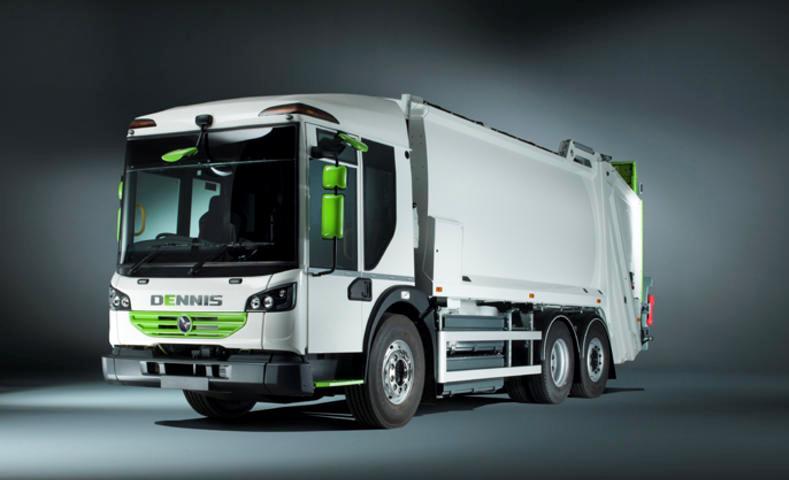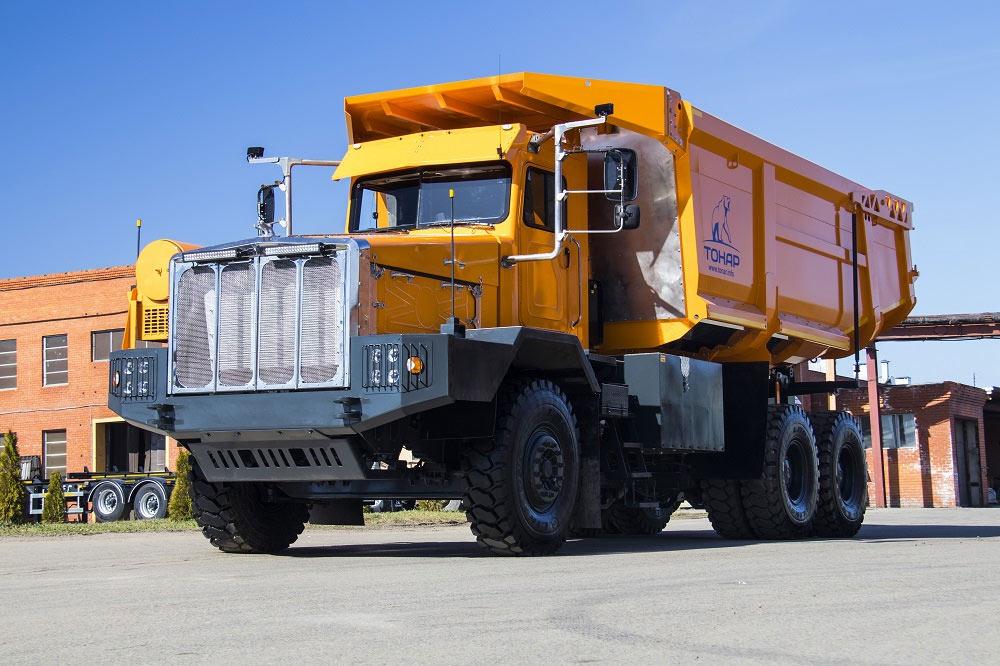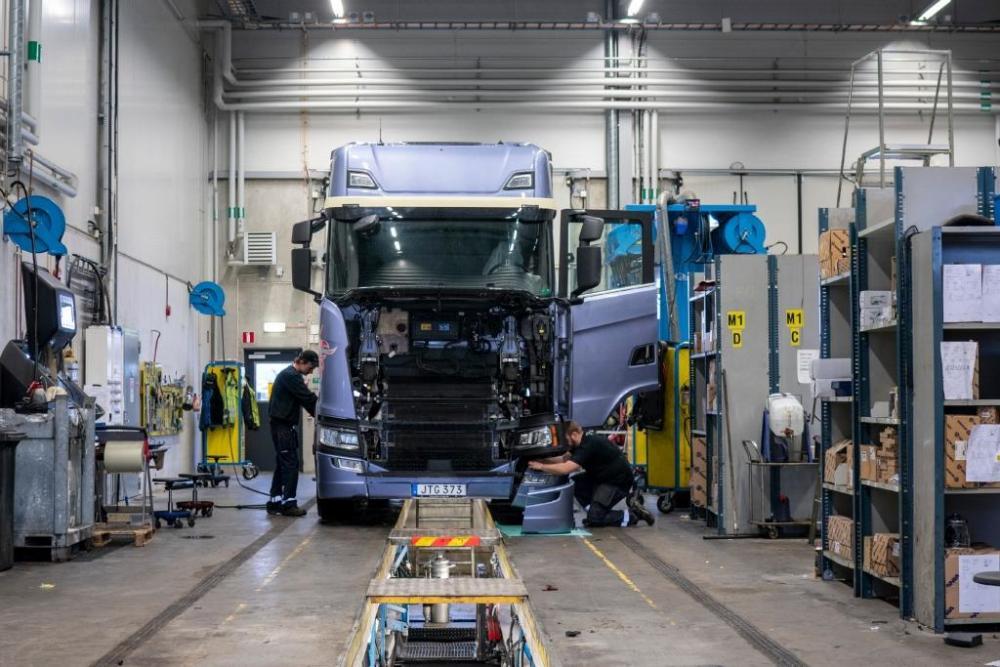
kscarbel2
Moderator-
Posts
18,895 -
Joined
-
Days Won
114
Content Type
Profiles
Forums
Gallery
Events
Blogs
BMT Wiki
Collections
Store
Everything posted by kscarbel2
-
Dennis Eagle Press Release / May 11, 2018 Dennis Eagle's new eCollect refuse chassis, due to go into production towards the end of 2019, is a fully integrated product (low-entry chassis, refuse compaction body, bin lift and telematics system). With specifically designed battery packs and control systems, the eCollect features 300kWr next generation batteries, incorporating the latest available technology, with a 200kW electric motor driving a conventional axle. It will initially be available to the market in a 26-tonne 6x2 rear steer narrow (2.25m wide) configuration with left or right-hand drive options, a 19m3 narrow body and automatic split bin lift. Kevin Else, Managing Director at Dennis Eagle, comments: “We are very excited to be unveiling our new eCollect electric model at IFAT. It is the result of many years’ research and development, and we are confident the end result will offer our customers a more environmentally friendly refuse collection vehicle that delivers affordable lifetime costs, whilst delivering zero emission waste collection and transportation. “Aside from the replacing the diesel engine with an electric drive system, we have made minimal changes to the vehicle design, helping to ensure ease of maintenance, as well as product familiarity with drivers and crews. “As part of our rigorous development process the vehicle is currently being subjected to extensive trials and technical verifications. These are designed to optimise battery management software, enabling the range of the vehicle to meet the requirements of urban collection and ensuring it provides a viable, high-performance solution comparable to traditional fuel types.” .
-
-
EPA to rescind glider kit emissions regs enacted last year
kscarbel2 replied to kscarbel2's topic in Trucking News
Lawmakers urge OMB to finalize repeal of emissions standards for gliders Land Line (OOIDA) / May 31, 2018 A group of 24 lawmakers – 21 members of the House and three senators – are urging the director of the Office of Management and Budget to move forward quickly with the Environmental Protection Agency’s final rule to repeal emissions standards on glider kits. The lawmakers – including Rep. Bill Posey, R-Fla.; Rep. Diane Black, R-Tenn.; Sen. Joni Ernst, R-Iowa; Rep. Brian Babin, R-Texas; and 20 others – sent a letter last week to OMB Director Mick Mulvaney. “We are writing to you regarding the rule titled ‘Greenhouse Gas Emissions and Fuel Efficiency Standards for Medium- and Heavy-Duty Engines and Vehicles Phase 2’ that apples to glider vehicles, glider engines and glider kits,” the letter stated. “As members of Congress who represent manufacturers and/or users of glider kits, we urge the Office of Management and Budget to waive the regulatory impact analysis on this rule.” In November, the EPA proposed a rule to repeal emissions requirements for glider vehicles, glider engines and glider kits. The EPA said the proposal was based on an interpretation of the Clean Air Act under which “glider kits would not be treated as incomplete new motor vehicles.” Under the proposed interpretation, EPA would lack the authority to regulate the gliders. Simply put, the EPA said that gliders aren’t new trucks and that they shouldn’t be regulated like new trucks. According to a 2018 spring regulatory report released earlier this month, the rule could be finalized as soon as May. However, the month is set to close with no final rule in place. The lawmakers said the Office of Information and Regulatory Affairs informed EPA that it needs a regulatory impact analysis before the final rule can take effect. “It is our understanding the EPA does not need to conduct an RIA for deregulatory issues and taking such a step would delay this deregulatory action unnecessarily,” the letter stated. “(Gliders) are an affordable option for many small businesses. According to Fitzgerald Glider Kits, eliminating this choice may adversely impact the U.S. economy by $1 billion and jeopardize 22,000 jobs. Again, we urge the OMB to waive the RIA and support the EPA’s final rule concerning glider vehicles, engines and kits with an immediate effective date.” The rule has received opposition from environmentalist groups. To see the entire letter and all of the lawmakers who signed it, go here. -
Trucks Planet / May 18, 2018 Russian severe service truckmaker Tonar has introduced the new 60-ton model 7501 dump truck. While not as large as the BelAZ dumpers, at the moment it is the heaviest off-highway dump truck made in Russia. The Tonar-7501 6x4 received a 2-place aluminum cabin mounted on air suspension. The engine is a 15-liter 6-cylinder Cummins QSX-15 diesel with power of 540 hp. .
-
Lexington Kentucky maths show
kscarbel2 replied to mackdump600@yahoo.com's topic in Truck Shows and Events
I recall when Lexington Mack took on the Dodge truck franchise, in addition to Mack. They had a row of D-series pickups out front, and a new massive Big Horn being prepped for delivery. The management was thrilled with their new and broad Dodge range. -
Chrysler, Fiat, Dodge missing from FCA 5-year briefing Larry Vellequette, Automotive News / May 31, 2018 Fiat Chrysler Automobiles will not present a future plan for its eponymous Fiat and Chrysler brands, as well as Dodge and Lancia -- placing those storied but troubled mass-market brands' futures in question -- according to a schedule of presentations listed by FCA for the daylong event to lay out its 2018-22 business plan Friday in Balocco, Italy. The unpublished schedule, available on a company website for part of Thursday before being taken down, indicates that the automaker will lay out future plans for Jeep, Ram, Maserati and Alfa Romeo, but no other brands, as it did at similar events in 2009 and 2014. It's unclear whether the lack of presentations for the Chrysler, Dodge and Fiat brands on the schedule may be changed before the event, or what the fate of those brands will be. Lancia is not sold outside of Italy and has only one model. A spokesman for FCA US declined to comment. The schedule also shows that CEO Sergio Marchionne and his team will also present a "Technology Update on Autonomous Driving and Connectivity." FCA and Waymo on Thursday announced a partnership that will see the Google affiliate purchase up to 62,000 Chrysler Pacifica Hybrid minivans beginning later this year, and discuss licensing Waymo's self-driving technology for an FCA retail vehicle. Another presentation is titled "FCA and CO2 Reduction." The automaker has been locked in a dispute with regulators in both the United States and Europe over emissions issues with its diesel engines. FCA's management team also will present the "Compliance Plan Impact on our Product Approach in Each Region." This presentation is likely to give information on the longevity of the Dodge and Chrysler brands in the United States, which are dominated by older vehicles, except for the Chrysler Pacifica. A final presentation is titled "US Finco Opportunity." Bloomberg reported earlier this week that FCA is considering creating a captive finance arm in the United States, replacing its marketing relationship with Santander Consumer USA, which currently operates Chrysler Capital. Finally, the schedule for the Balocco event indicates a presentation, likely to be led by CFO Richard Palmer, for the "Business Plan Financial Overview," followed by a Q&A session for investors and analysts in attendance, and closing remarks. The last three events will be broadcast live here.
-
Scania Group Press Release / May 29, 2018 Scania Flexible Maintenance is reaching more and more of our customer base, providing businesses with optimised services that can maximise their vehicles’ uptime. Scania has now signed more than 50,000 Flexible Maintenance contracts since the service was initially launched less than two years ago. Flexible Maintenance provides vehicle servicing based on real-time operational data and actual vehicle usage. Each truck receives exactly the maintenance it needs and, in most cases, spends more time on the road. “Throughout the world some 300,000 Scania vehicles are now connected and, of these, one-sixth have opted for Flexible Maintenance, which is incredible,” says Product Manager Niklas Olsson, Global Service Concepts. The UK is a strong market for Flexible Maintenance The United Kingdom is among the countries where the service has its greatest market penetration. Since Flexible Maintenance launched there in December 2016, more than 14,000 contracts have been signed. “It has provided great opportunities to plan services based on how fleets operate,” explains Mark Grant, Services Director at Scania Great Britain. “For example, the landscape is completely flat here in eastern England with not a hill in sight, which is very different from operating in the Scottish mountains. We can offer a service regime that reflects varying types of operations. Ultimately, this helps optimise the customer’s total operating economy, which is what we at Scania strive for.” A more proactive approach to maintenance For Scania’s global network of workshops, Flexible Maintenance has meant a more proactive approach. Rather than waiting for customers to call in for services, the workshop itself contacts the customer in good time when the continuously-optimised service plan indicates the need for maintenance. “It really is a change of mindset for our workshops,” says Niklas Olsson. “It has also resulted in better utilisation of workshop capacity and improved customer uptime since work can be gainfully planned in advance.” .
-
DAF Trucks Press Release / May 31, 2018 This is how we designed and tested your DAF truck in the 1980's. .
-
DAF Trucks Press Release / May 28, 2018 This movie shows the great CO2 achievements made in the past decades and the great steps that will be made in future. Over the last decade average fuel consumption and therefore CO2 emissions of a long distance truck has been reduced by 14%. Additional steps will be made: Enhanced aerodynamics will result in reduced CO2 emissions. There is also an opportunity to improve the driver’s fields of vision. .
-
DAF to Release Electric Truck in Europe by Year's End
kscarbel2 replied to kscarbel2's topic in Trucking News
. . -
-
Renault Trucks Press Release / May 11, 2018 Discover how works the Optidriver automated gearbox, which comes as standard on Renault Trucks T, C, K and D. This gearbox offers better driving comfort, lower fuel consumption and high reliability. Optidriver is also available with a reinforced configuration (Optidriver Xtrem) and with additional crawler gears (Optidriver Xtended) for severe and construction applications. .
-
Renault Trucks Press Release / May 30, 2018 Discover easy earthmoving in extreme conditions with Renault Trucks C and K ranges, designed to meet the demanding needs of the earthmoving industry. Key features include an increased approach angle, off-road mode and Optitrack system for optimum on-site manoeuvrability. A reinforced chassis and intensive component testing deliver a vehicle to withstand challenging terrains, frequent overloads and intensive use. .
-
Renault Trucks Press Release / May 30, 2018 The Renault Trucks C and Renault Master are designed to make materials transport to construction sites easy. They are highly adaptable, simplifying the installation of equipment such as cranes and platforms, and access to even the most challenging sites is achieved through greater ground clearance, alongside a reduced turning radius for increased maneuverability. .
-
Volvo Trucks - Volvo vocational FMX extreme weight testing
kscarbel2 posted a topic in Trucking News
Volvo Trucks Press Release / May 15, 2018 This extreme weight test features an ordinary Volvo FMX vocational chassis fitted with our heaviest gearbox, I-Shift with crawler gears. Two-tonne weights were dropped 26 times from various heights and positions to test the quality of the engine and gearbox mounting. The maximum g-force equals that of 214 tonnes at rest. First, the weights were dropped in the middle of the super structure and then right above the rear engine mounts. *This is a so-called misuse test that was carried out by professionals in a controlled, test environment. Volvo Trucks strongly advises against dropping heavy objects on a truck in any other setting. . -
Florida High School Shooting - 17 confirmed dead
kscarbel2 replied to kscarbel2's topic in Odds and Ends
-
-
Peterbilt Motors Press Release / May 4, 2018 Our Brand Promise: Purposeful Innovation. Individualized Solutions. Enduring Craftsmanship. Pride & Class. .
-
Daimler Trucks North America (DTNA) Press Release / May 24, 2018 .
BigMackTrucks.com
BigMackTrucks.com is a support forum for antique, classic and modern Mack Trucks! The forum is owned and maintained by Watt's Truck Center, Inc. an independent, full service Mack dealer. The forums are not affiliated with Mack Trucks, Inc.
Our Vendors and Advertisers
Thank you for your support!






